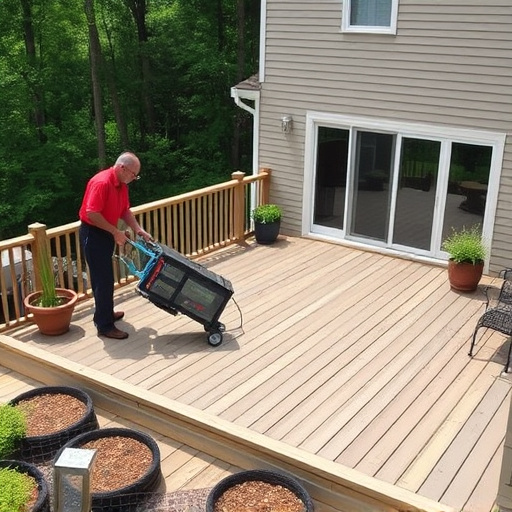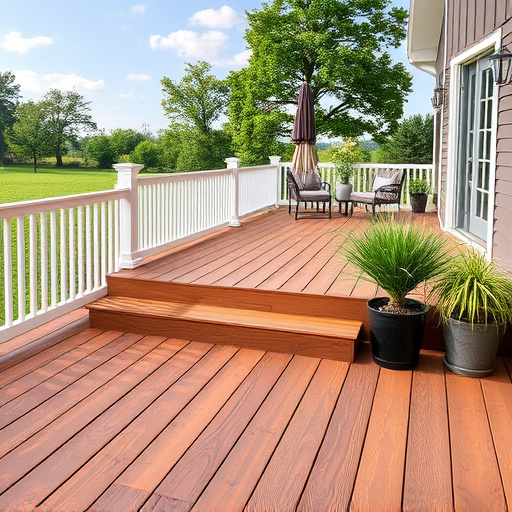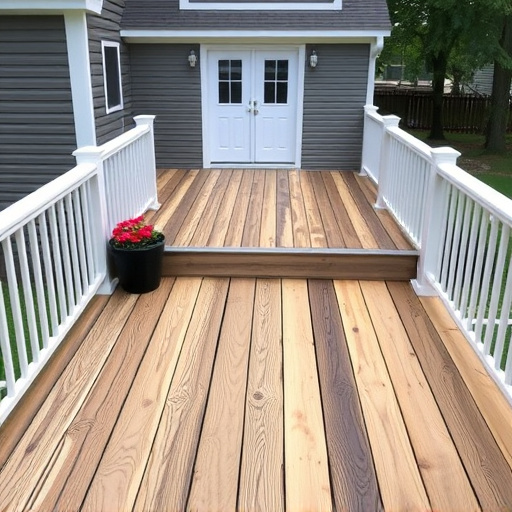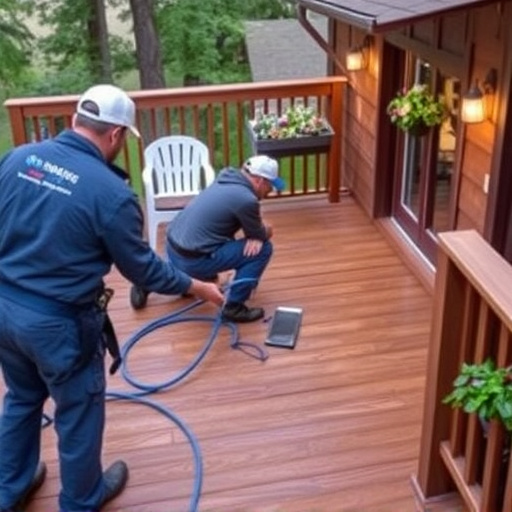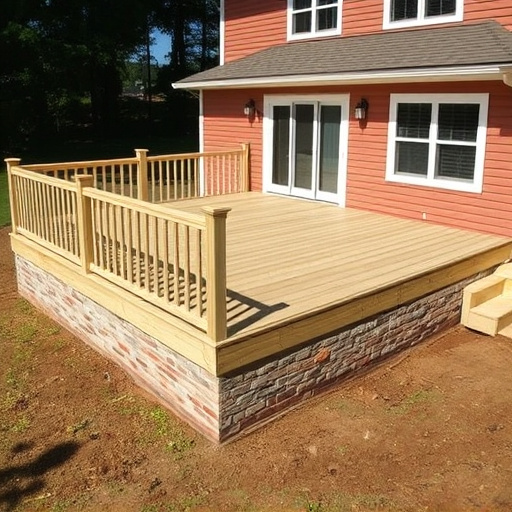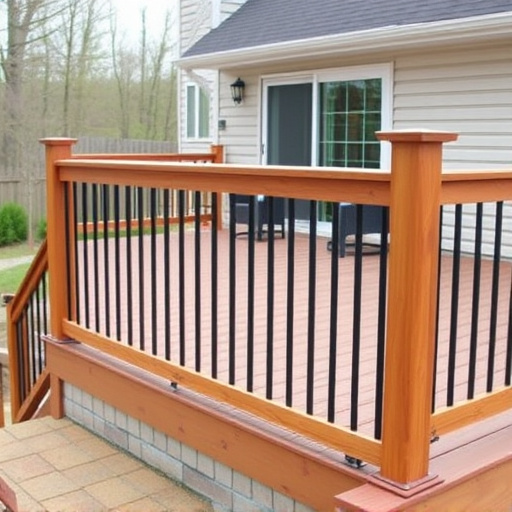Deck staining requires understanding wood types and choosing the right stain for protection and aesthetics. Pressure-treated wood needs a primer and brush application, while natural wood benefits from roller application. Balancing color preference with weather resistance, select water-based or oil-based formulas based on climate and traffic. These techniques ensure long-lasting, protective finishes for decks and siding.
Elevate your outdoor space with the art of deck staining! Whether you’ve got natural wood or pressure-treated lumber, achieving a stunning finish is within reach. This guide unravels the secrets to successful deck staining, starting with understanding wood types for optimal results. We’ll help you navigate color choices and formulas, plus share expert application techniques for long-lasting beauty. Discover how to transform your deck into a vibrant, protected surface that stands the test of time.
- Understanding Wood Types for Optimal Staining
- Choosing the Right Stain: Color and Formula
- Application Techniques for Long-Lasting Results
Understanding Wood Types for Optimal Staining
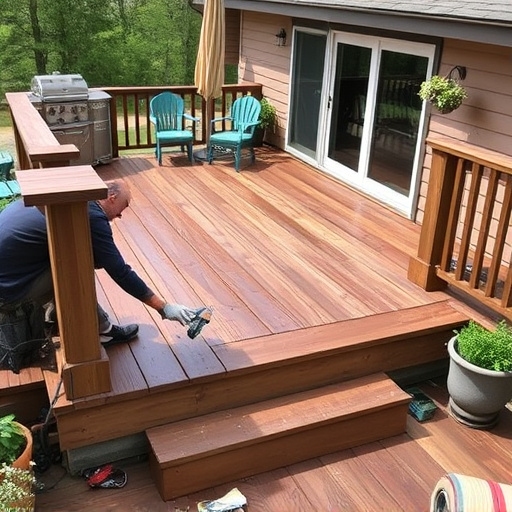
When considering deck staining, understanding the types of wood you’re working with is key to achieving optimal results. Pressure-treated wood and natural wood each have distinct properties that impact how stains adhere and wear over time. Pressure-treated wood, often used for decks due to its resistance to rot and insects, absorbs stain differently than untreated wood. Its dense surface requires a suitable primer to ensure better adhesion, while natural wood allows for direct application of stain.
Knowing the difference is crucial in selecting the right staining technique and products. For instance, a specialized roof consulting service might recommend specific stains or primers tailored to pressure-treated wood to enhance durability. Similarly, when considering residential siding or siding replacement projects, understanding wood types helps ensure long-lasting aesthetics and protection.
Choosing the Right Stain: Color and Formula
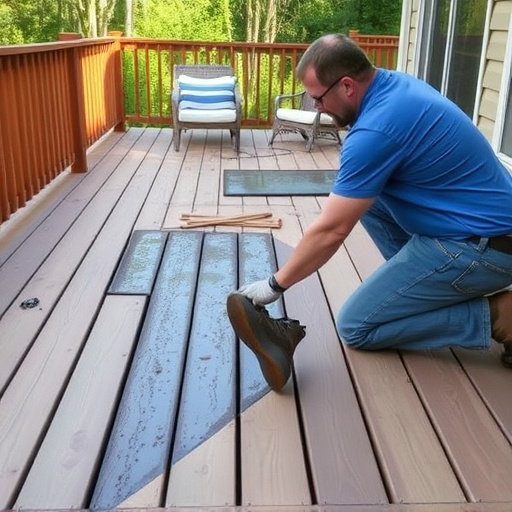
When it comes to deck staining, choosing the right stain is a crucial step. The first consideration is color – whether you prefer a natural, transparent finish that enhances the wood’s grain or a more dramatic, solid color that provides better protection against fading and weathering. Different stains offer varying levels of transparency and opacity, so selecting one that aligns with your desired aesthetic while ensuring adequate protection for both pressure-treated and natural wood is essential.
Additionally, the formula of the stain plays a significant role. Water-based stains are popular due to their low odor and quick drying time, making them user-friendly. Oil-based stains, on the other hand, offer deeper colors and better penetration into the wood, providing superior durability, especially in harsh weather conditions. When deciding, consider factors like your climate, deck traffic, and how often you plan to reapply the stain – these will influence the best formula for your specific needs, whether it’s a simple roof repair or a full roof replacement or even professional siding services.
Application Techniques for Long-Lasting Results
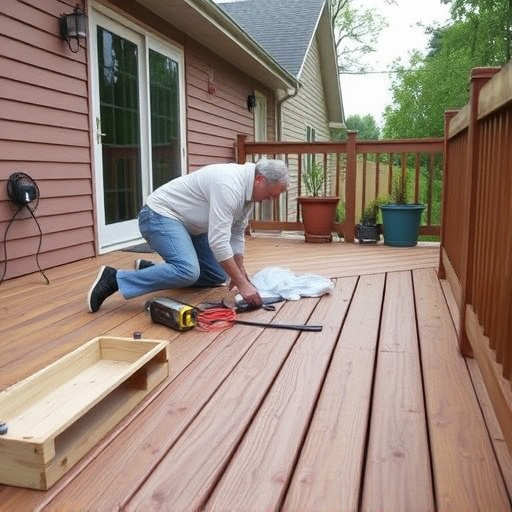
When it comes to achieving long-lasting results with deck staining, the technique plays a crucial role. For pressure-treated wood, a brush application is ideal as it allows for even coverage and helps to lock in the stain’s color. Start by cleaning the deck thoroughly to remove any dirt or debris, then apply an even coat of stain using a high-quality brush. This method ensures that every groove and corner is reached, providing a consistent finish.
For natural wood decks, a roller application can be more effective. Rollers cover more area in less time, making them perfect for larger spaces. Ensure the roller is clean and well-saturated with stain to avoid streaking. Apply the stain in long, even strokes, allowing each section to dry slightly before moving on. This technique promotes better absorption of the stain into the wood’s grain, resulting in a more durable finish that complements the natural beauty of the deck—a stark contrast to needing roofing services or siding repairs down the line.
Deck staining is a powerful tool to enhance both the aesthetics and durability of your outdoor space. By understanding different wood types, selecting the perfect stain color and formula, and mastering application techniques, you can achieve long-lasting, stunning results. With proper care and regular maintenance, your deck will be a focal point of beauty and functionality for years to come.








